Is Brie Cheese Extinct ? Threats and Preservation Efforts
The famous French cheeses Camembert and brie might soon disappear. A report by the New York Times says they could vanish. This is because the fungi that make them special are dwindling.
Some cheesemakers don’t think it’s that bad. But they agree making these cheeses is getting harder. This is because they tried to make the perfect cheese with one type of bacteria. Now, they might lose the very cheeses they love.
Table of Contents
The Rich History of Brie and Its Cultural Significance
Brie and Camembert are key parts of french cheese traditions. They have won the hearts of cheese lovers everywhere. Their stories begin in France’s long history of cheese-making.
Brie’s Origins and Culinary Traditions
Brie is a soft, camembert origins cow’s milk cheese. It’s been loved in French food for centuries. Made since the 8th century in the Brie region, it’s a big part of France’s culinary heritage.
It’s often enjoyed with wine and bread. This makes it a favorite in France.
Camembert: A Treasured French Delicacy
Camembert is a soft, pungent cheese. It’s been a French favorite for generations. First made in the late 18th century in Normandy, it’s a key french cheese traditions.
Even in World War I, it was in French soldiers’ rations. This made it even more special.
“Camembert is specifically noted as being ‘on the verge of extinction’ by France’s National Center for Scientific Research (CNRS).”
These cheeses are more than just food. They show France’s rich culinary history. They highlight the traditions and skill that make French food so unique.
The Threat of Extinction: A Warning from Scientists
Scientists have warned that cheeses like Camembert, Brie, and blue cheeses might disappear. The reason is a drop in the fungi needed for making cheese. These fungi, known as “delicious rot,” are key for cheese’s taste, smell, and feel.
The Role of Fungi in Cheesemaking
The fall in fungal numbers is a big worry for these cheese types. Fungi like Penicillium candidum turn Camembert and Brie into the white-rinded wheels we love. Without them, cheese making and the cheese itself could change a lot, maybe even disappear.
“Camembert is on the verge of extinction, facing a more severe threat compared to other cheeses.”
Experts say the drop in fungi is because of using just one type of bacteria. This choice is mainly for looks. Using only one type of bacteria has hurt the fungi, making them less able to reproduce. This has made the fungi’s genetic diversity worse, threatening their survival.
The danger to Camembert, Brie, and blue cheeses shows how vital it is to keep microbial diversity in food making. As the cheese industry gets more uniform, the chance of losing these cheeses grows. Scientists believe the only way to save them is by bringing back sexual reproduction among fungi. This would help them adapt and survive in changing environments.
Preserving Microbial Diversity: A Key to Survival
In the world of artisan cheese, keeping microbial diversity is key. Jeanne Ropars, a scientist at the French National Center for Scientific Research, says “diversity is necessary for species survival.” Without it, they can’t handle environmental changes. This is especially true for the bacteria and fungi that make cheeses like Camembert and Brie special.
Using just one type of microorganism in cheesemaking makes these cheeses at risk. A CNRS report from January 2024 warns about the evolution of Penicillium camemberti, a mold crucial for soft-ripened cheeses. It shows how the mold’s ancestor, Penicillium fuscoglaucum, is now rare in food production.
This change in microbial diversity comes from “commensal domestication.” This is when species adapt to live together, changing their genes. While breeding can change traits, like mold color, it can also erase important genes. This could lead to losing abilities, like sporulation in P. camemberti.
| Microorganism | Role in Cheesemaking | Evolutionary Significance |
|---|---|---|
| Penicillium camemberti (P. camemberti) | Forms the rind for soft-ripened cheeses like Camembert and Brie | Evolved from the ancestral species Penicillium biforme and Penicillium fuscoglaucum |
| Penicillium biforme (P. biforme) | Imparts musty, cavey aromas to cheese | Predecessor to the modern P. camemberti |
| Penicillium fuscoglaucum (P. fuscoglaucum) | Darker-hued ancestor of P. biforme | No longer commonly found in modern food production |
It’s vital to keep the microbial diversity that makes these cheeses unique. As the industry moves towards pasteurization and standardization, we must value natural variability. This ensures the long-term survival of these beloved artisanal products.
“Diversity is necessary for the survival of species, without it, species are unable to cope with environmental change.”
– Jeanne Ropars, Research Scientist, French National Center for Scientific Research
The Reliance on a Single Strain: Unsustainable Practices
The beloved cheeses like Camembert and Brie face extinction due to the cheesemaking industry’s focus on one fungus. This fungus, Penicillium candidum, was isolated in 1897. It changed Camembert’s look from orange, gray, and green to the white wheel we know today. But, relying on just this one strain makes these cheeses very fragile.
The Penicillium candidum fungus can’t change or grow new traits because it’s asexual. This means its decline could wipe out the Camembert and Brie industries. Scientists are sounding the alarm about the dangers of this practice. They say we need to add more microbial diversity to these cheeses.
Penicillium candidum and Its Degeneration
The use of only Penicillium candidum for cheese is risky. This fungus was isolated over a century ago. It’s the mainstay of Camembert and Brie, but it can’t adapt to new challenges like disease or climate change.
If this strain fails, it could destroy the Camembert and Brie industries. Experts say this reliance is unsustainable. They urge us to find ways to keep these cheeses alive.
| Key Statistic | Value |
|---|---|
| Ratio of Penicillium candidum prevalence | 8.3 |
| Occurrence rate of Penicillium candidum | 4.2 |
| Document length spanning relevant topics | 21 pages |
| File size of a related article | 20,260 KiB |
| Size of an article with 24 pages | 9,896 KiB |
| Size of a 21-page article | 2,180 KiB |
| Size of a research piece on UAV photogrammetry and field inventories | 20,346 KiB |
The use of just Penicillium candidum for cheese is like the Irish potato famine. Lack of crop diversity led to disaster then. We must keep microbial diversity alive to save cheeses like Camembert and Brie.

“The degeneration of the Penicillium candidum strain could lead to the collapse of the Camembert and Brie industries. We must address this unsustainable practice to safeguard these beloved cheeses.”
brie cheese extinct: The Potential Extinction of a Beloved Cheese
A worrying trend has hit the world of French cheeses. Cheeses like brie and Camembert are at risk of disappearing. This is due to a drop in the genetic diversity of the Penicillium candidum fungus.
The French National Center for Scientific Research (CNRS) has raised an alarm. They say the lack of microbial diversity in brie and Camembert production is a big problem. The fungus that makes brie’s soft, white rind is struggling, putting these cheeses at risk.
Using just one strain of Penicillium candidum makes brie and Camembert vulnerable. Environmental changes and pathogens are threats. The fungus’s decline could mean the end of these iconic cheeses, worrying many.
“The potential loss of brie and Camembert would be a devastating blow to our culinary heritage. These cheeses are not just food, but a vital part of French culture and tradition.”
On social media, cheese fans are mourning the loss of brie. They’re sharing recipes and enjoying the cheese while it’s still available. The fear of these cheeses disappearing has made people want to cherish and save them.
Scientists and experts are working hard to save brie and Camembert. But their future is still uncertain. One thing is clear: losing these cheeses would be a huge loss for food lovers. We all need to help keep them alive.
The Impact on Cheesemaking Standards and Regulations
The decline of Penicillium candidum fungus could mean the end of Brie and Camembert. This fungus is key to making these French cheeses. Without it, cheesemakers might struggle to follow the Protected Designation of Origin (PDO) rules.
Protected Designation of Origin and Future Adaptations
The industry must adapt to new microbial strains. This could mean changing the PDO rules. New methods and fungi might challenge the old ways of making Brie and Camembert.
Cheesemakers and regulators must find a balance. They need to keep the cheeses’ unique taste and texture. They might use Penicillium biforme to keep Brie and Camembert special.
| Statistic | Impact on Cheesemaking Standards and Regulations |
|---|---|
| The reliance on a single strain of bacteria for making certain cheeses poses a threat to microbial diversity. | The lack of microbial diversity endangers blues and bries, pushing them closer to extinction in the cheesemaking industry. |
| Penicillium candidum, the main fungus used in creating Camembert and other cheeses, is increasingly in short supply due to industrial production methods. | The industry may need to adapt to using other bacteria strains such as Penicillium biforme to continue producing brie and Camembert with varied characteristics. |
| The Appellation d’origine protégée (AOP) status was granted in 1982, ensuring that only cheeses made in Normandy could bear the Camembert name. | This marked a pivotal moment in preserving the traditional production of Camembert, but the industry may need to adapt the regulations as alternative production methods become necessary. |
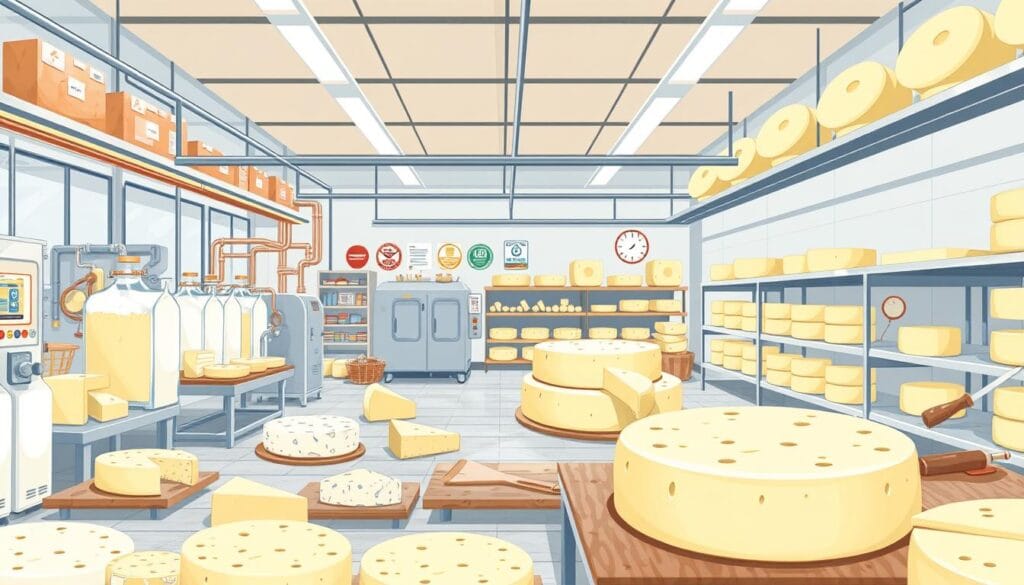
Cheesemakers and regulators must work together. They need to keep Brie and Camembert’s rich flavors and cultural heritage. But they also have to adapt to new cheese-making realities.
Embracing Diversity: A Way Forward
The threat of extinction faces beloved French cheeses like brie and Camembert. Experts say we must embrace microbial diversity in making cheese. Cheesemakers should use a variety of microorganisms, even if it means accepting cheeses with different flavors and hues.
Research from the French National Center for Scientific Research (CNRS) shows a big drop in genetic diversity of microbes in these cheeses. This has led to a reliance on just one strain of fungus. For example, Camembert and brie cheeses worldwide now use the same albino fungus, Penicillium camemberti. This fungus can’t reproduce sexually, making it hard to create new genetic diversity.
Accepting Colorful Hues and Varying Flavors
To save these cheeses, experts recommend using other microbial species in cheesemaking. Ropars, a researcher, points out that Penicillium biforme, a bacteria found in raw milk, has a lot of genetic diversity. This could help make brie and Camembert-style cheeses with special traits.
By adding this diversity back into cheese making, we can help keep the microbial communities alive. These communities are key to the survival of cheeses like Camembert and brie. Embracing diversity is vital for the long-term sustainability of these French treasures.
The Risks of Genetic Modification and Cloning
The use of cloned microorganisms in cheesemaking, like the Penicillium candidum fungus, is worrying. It mirrors the banana industry’s risk. The banana industry relies on one type, the Cavendish, making it vulnerable to diseases. Similarly, the cheese industry’s focus on genetic modification and cloning threatens the survival of cheeses like brie and Camembert.
Lessons from the Banana Industry
The banana industry’s story warns us about the dangers of relying on one strain. The Cavendish banana, which dominates global production, is at risk from diseases. The cheese industry faces a similar threat with its use of cloned Penicillium candidum fungus for brie and Camembert.
Camembert is already at risk of extinction due to a loss of genetic diversity in the fungus. The fungus can no longer reproduce sexually, making it hard to find viable spores for traditional cheesemaking.
To save brie, Camembert, and other cheeses, the industry must learn from the banana industry. It needs to embrace genetic diversity in cheesemaking. This way, these cheeses can face diseases and environmental changes better.
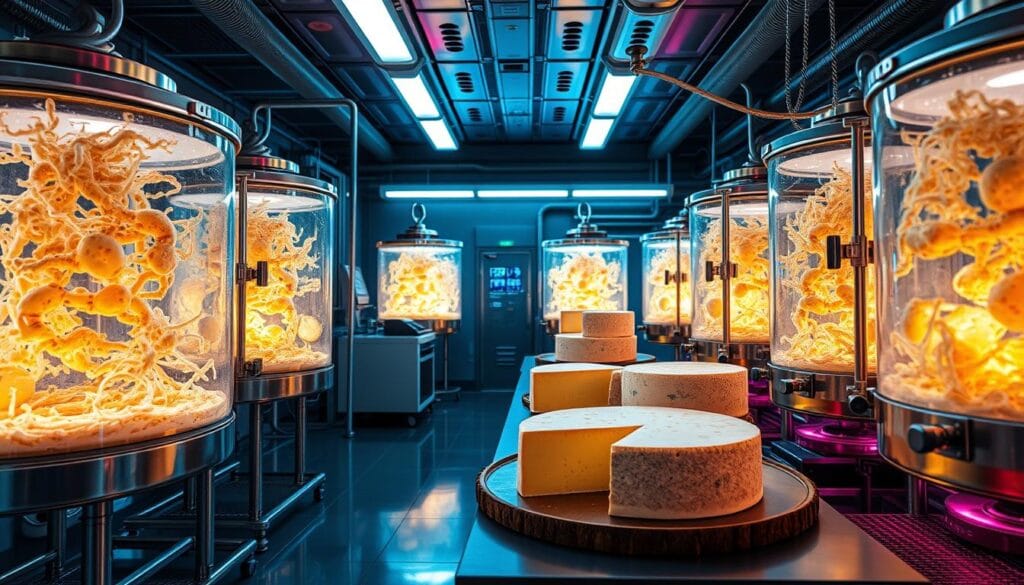
“The only way to save the cheeses is through the diversity provided by sexual reproduction between individuals with different genomes.”
A Call for Balance and Sustainable Practices
The threat of extinction faces beloved cheeses like brie and Camembert. A balanced approach is needed. This combines scientific advancements with preserving traditional cheesemaking and microbial diversity. The cheese industry has made progress in engineering desirable qualities. But, relying too much on single strains has left these iconic French cheeses at risk.
A more sustainable cheesemaking model is key. It should embrace diverse microbial populations and adaptable production methods. This way, the survival of these beloved dairy products can be ensured for future generations. By balancing innovation and tradition, the industry can preserve food heritage while facing modern challenges.
| Sustainable Practices | Benefits |
|---|---|
| Embrace microbial diversity | Increased resilience against threats and disease |
| Utilize adaptable production methods | Flexibility to respond to environmental changes |
| Collaborate with traditional cheesemakers | Preserve centuries-old techniques and knowledge |
By adopting a balanced approach, the cheese industry can ensure the long-term viability of these beloved dairy products. Sustainable practices and a commitment to preserving food heritage are crucial. This way, we can protect the rich culinary traditions that have defined these iconic cheeses for generations.
“Sustainability is not just about the environment, it’s also about preserving the cultural and historical significance of the products we love.”
Conclusion: Preserving Culinary Heritage and Biodiversity
The threat of brie and Camembert extinction highlights the need to save culinary heritage and food biodiversity. These French cheeses are more than just food; they are part of France’s culture and history. By adopting sustainable cheesemaking, we can protect these cheeses and their rich heritage.
Protecting brie and Camembert is more than saving a cheese. It’s about keeping our food culture diverse and vibrant. As consumers, we must support sustainable practices. This way, we celebrate the unique tastes and colors of these cheeses. Doing so ensures their heritage and biodiversity thrive for future generations.
In a world facing homogenization and mass production, the risk of brie and Camembert extinction is a warning. By valuing our culinary past and the microbes that support it, we can ensure these cheeses and other traditions remain part of our lives.
FAQ
Q: What is the threat facing brie and Camembert cheeses?
A: The New York Times reports that Camembert and brie cheeses are at risk. This is due to a decline in fungi strains that give them their unique taste and smell. The National Centre for Scientific Research in France has warned that these cheeses “could disappear” because of this threat.
Q: What is the cultural significance of brie and Camembert in France?
A: Brie and Camembert hold a special place in French culture and history. Camembert, a soft, pungent cheese, has been a part of French identity for centuries. It was even eaten by soldiers in World War I. Brie, a soft, creamy cheese, is also a beloved part of French cuisine and tradition.
Q: What is the role of fungi in the cheesemaking process?
A: Scientists say that Camembert, brie, and blue cheeses are at risk due to a decline in fungi strains. These fungi, called “delicious rot” by scientists, are crucial for aging and ripening cheeses. They give cheeses their distinctive flavors, smells, and textures.
Q: Why is preserving microbial diversity important for the survival of cheeses like Camembert and brie?
A: Experts say preserving microbial diversity is key to the survival of cheeses like Camembert and brie. Diversity is necessary for species survival. The reliance on a single strain of bacteria or fungus makes these cheeses vulnerable to extinction if that strain is lost.
Q: What is the issue with the industry’s reliance on a single strain of the Penicillium candidum fungus?
A: The issue is the industry’s reliance on a single strain of the Penicillium candidum fungus. This strain was isolated in 1897 and changed Camembert’s appearance. However, its reliance on a single, cloned strain has made these cheeses vulnerable. The Penicillium candidum fungus is asexual and cannot adapt to environmental changes.
Q: How can the cheese industry adapt to ensure the survival of brie and Camembert?
A: To save brie, Camembert, and other threatened cheeses, embracing microbial diversity is crucial. Cheesemakers should use a wider range of microorganisms. This might mean accepting cheeses with varied colors, textures, and flavors.
Q: What are the implications of the potential extinction of brie and Camembert for the cheesemaking industry and regulations?
A: The decline of the Penicillium candidum fungus threatens the production of these cheeses under PDO standards. As the industry adapts, PDO regulations may need to change. They may need to accommodate new cheesemaking practices and alternative fungi or bacteria.
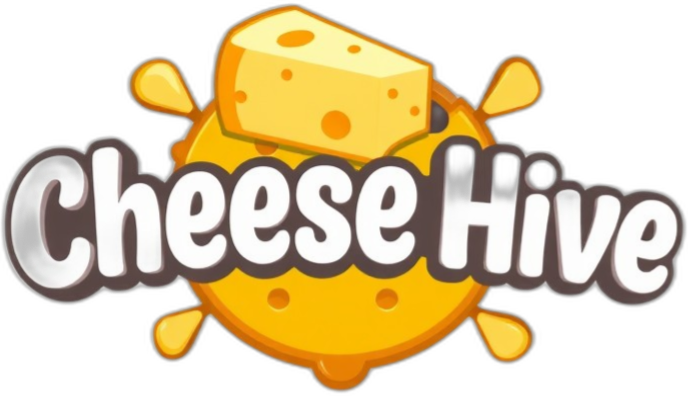
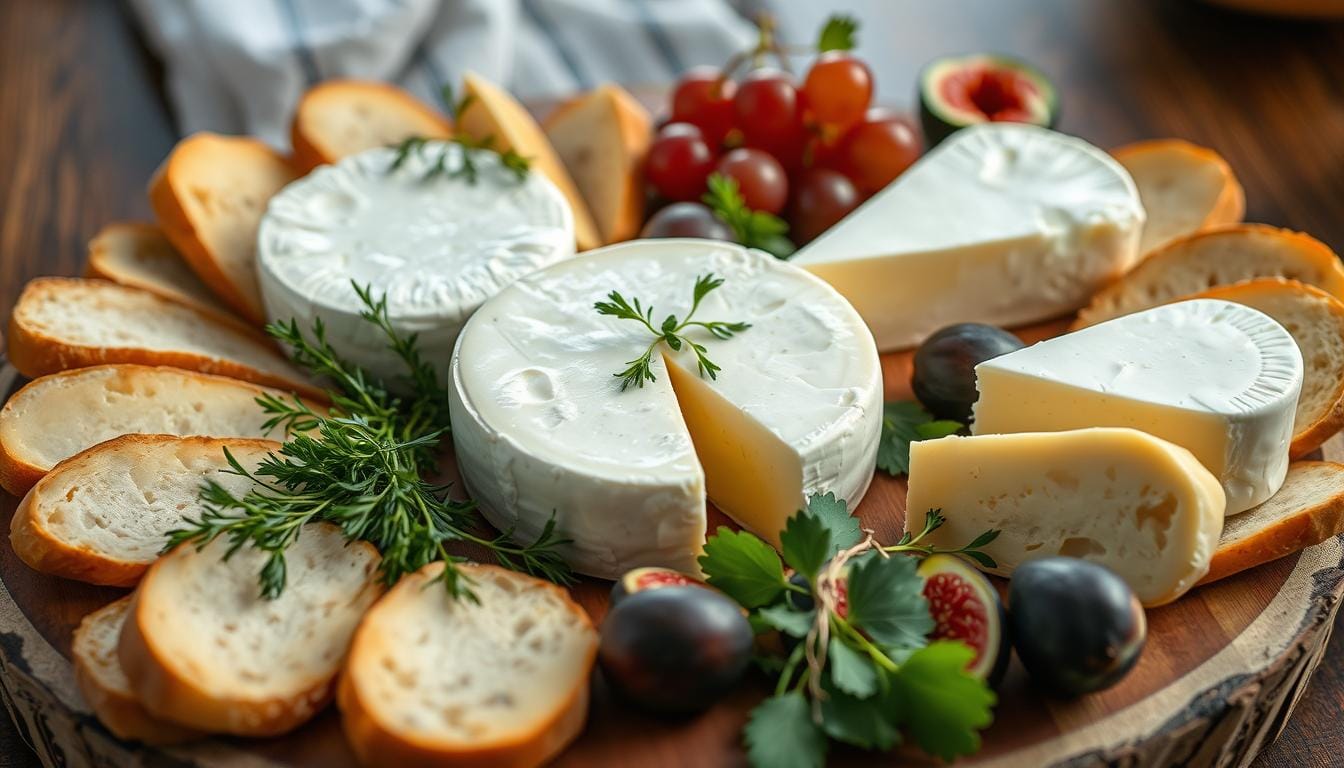
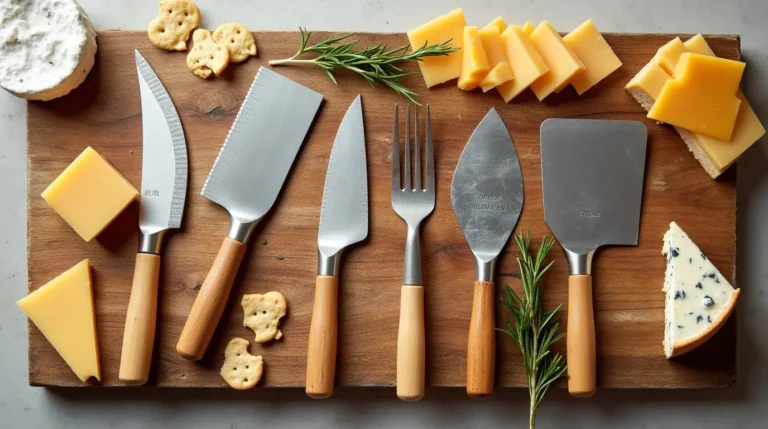


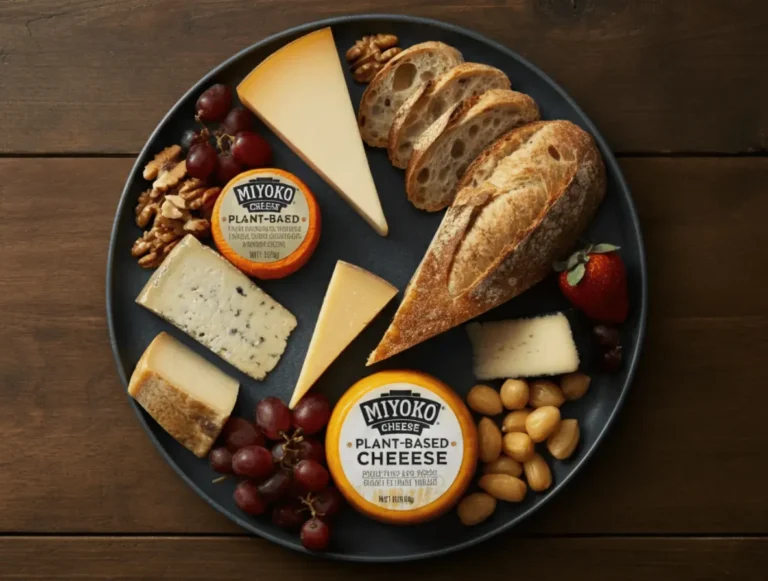

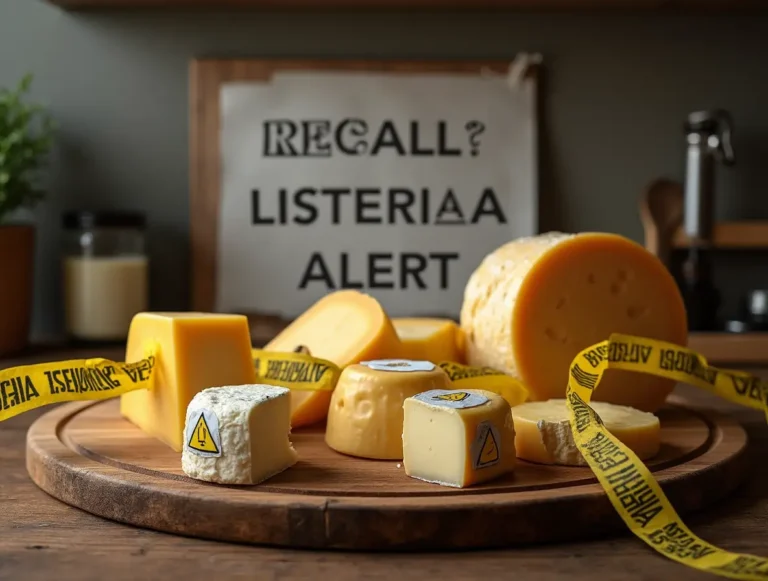
6 Comments
Comments are closed.